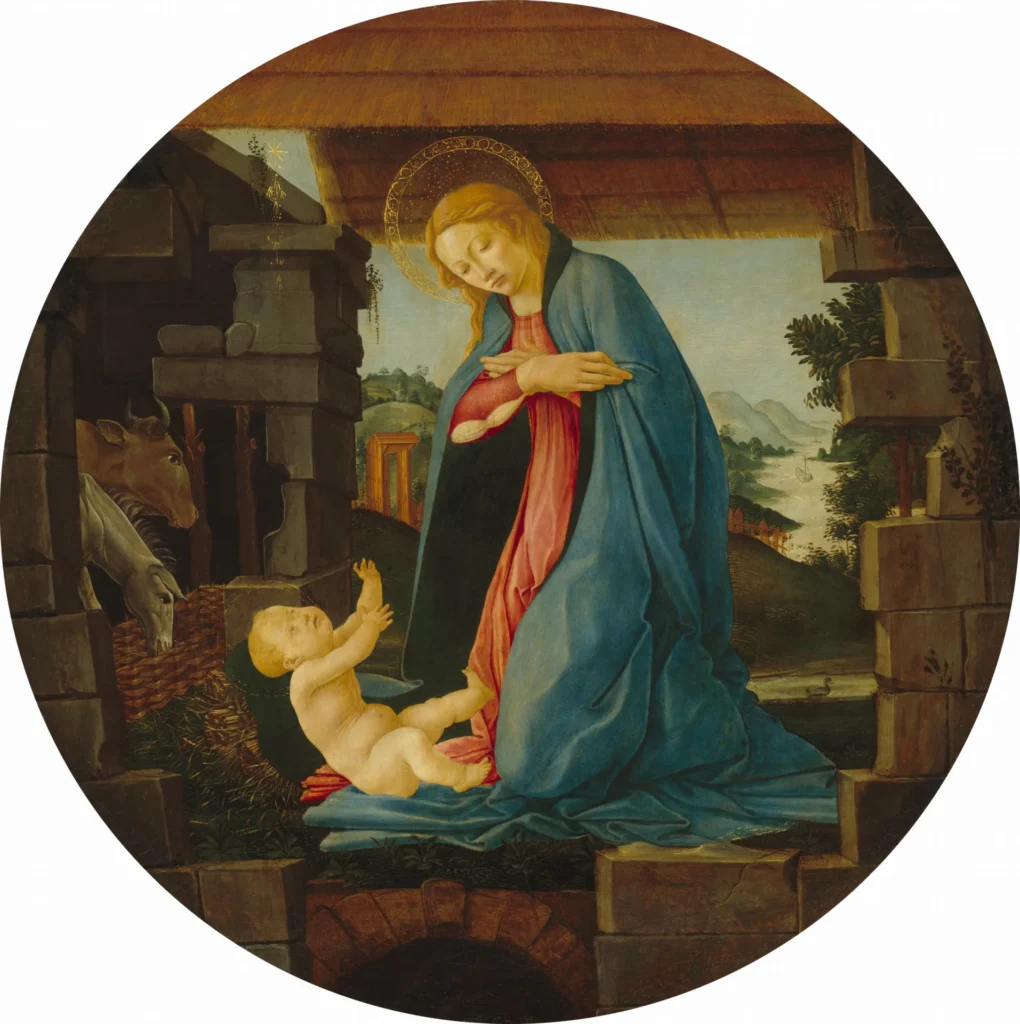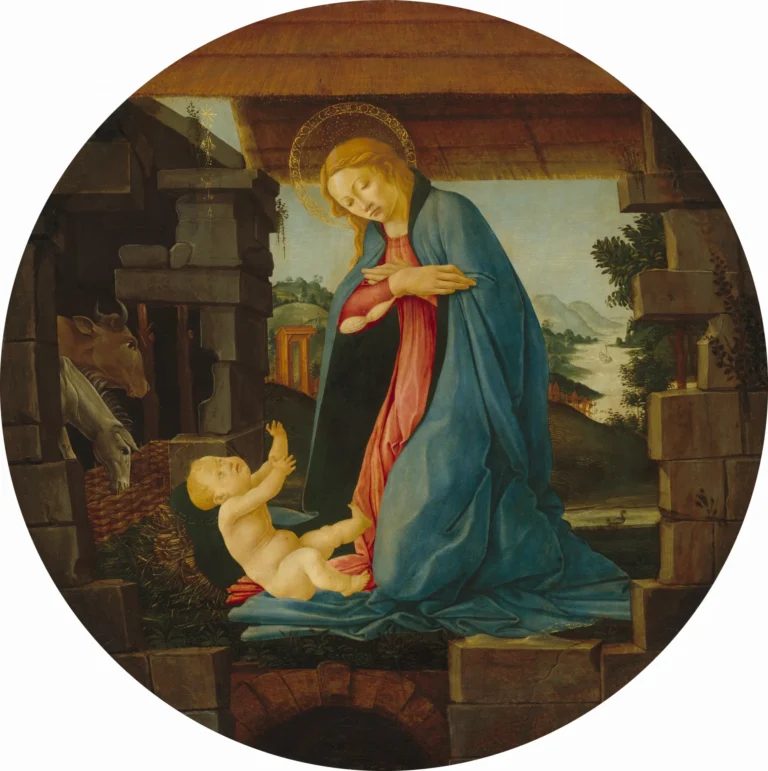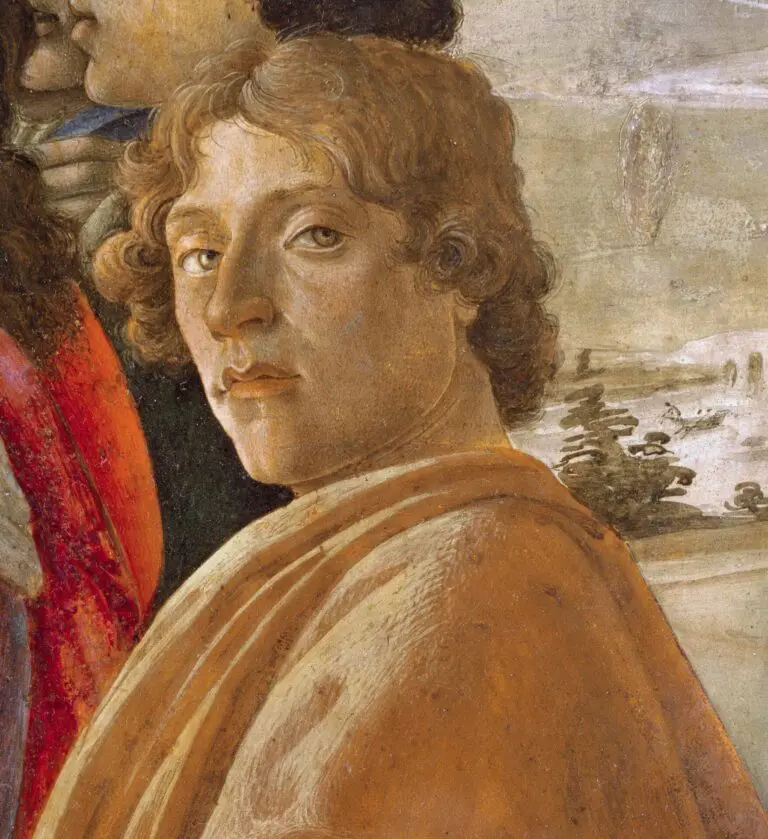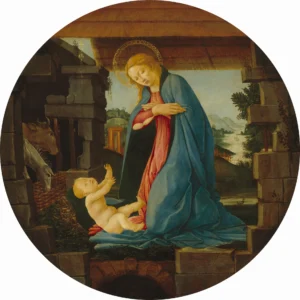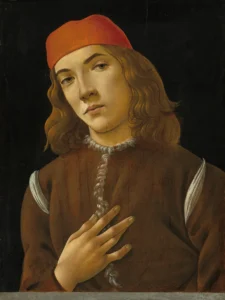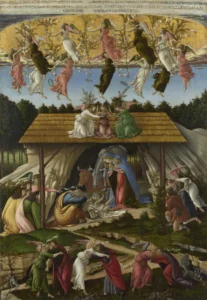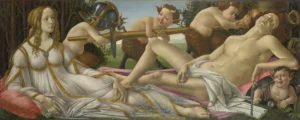The Virgin Adoring the Child (1480–1490)
The Virgin Adoring the Child is a captivating tempera painting attributed to the renowned Italian artist Sandro Botticelli, created between 1480 and 1490. The artwork skillfully captures the tender relationship between the Virgin Mary and the Christ Child, showcasing Botticelli's distinctive use of symbolism and ethereal beauty. With a diameter of 58.9 cm, it was executed on a poplar panel, intertwining divine reverence with emotional depth, characteristic of the Early Renaissance's spiritual inquiries.
1480 - 1490
About the Artwork
This masterpiece reflects Botticelli's exploration of religious themes, where the Virgin Mary gazes lovingly at the Child Jesus as they are surrounded by a profound sense of calm and reverence. The arch depicted at the bottom of the artwork opens into a symbolic cave or abyss, highlighting the themes of sin and salvation that permeate many of Botticelli’s works. The included imagery, such as the duck on the water, adds layers of meaning that invite viewers to reflect on adoration and purity. Its provenance adds an intriguing narrative, having passed through various esteemed owners before becoming part of the National Gallery’s collection.
Did You Know
Liked what you see? Add it to your collection.
Enjoyed reading? Share it.
... continued
Artist and Date
The painting is attributed to Sandro Botticelli, an Italian artist, and is dated between 1480 and 1490.
Medium and Dimensions
The painting is executed in tempera on a poplar panel, with a diameter of 58.9 cm (23 3/16 in).
Provenance
The painting has a well-documented provenance. It was originally owned by Charles Paravey in Paris and was sold at Hôtel Drouot in 1878, attributed to Filippo Lippi. It later passed to Paravey's daughter, Mme Raynaud, and was sold again in 1929. The painting was acquired by Wildenstein & Co., Inc., in New York and then sold to the Samuel H. Kress Foundation in October 1947. It was gifted to the National Gallery of Art in Washington, D.C. in 1952.
Symbolism and Style
The painting features subtle symbolism characteristic of Botticelli's work. For example, the arch at the bottom of the picture opens into a cave or abyss, symbolizing death or sin, over which Christ triumphs. A duck depicted on the water is thought to symbolize reverence or adoration.
Exhibition History
The painting has been exhibited in several notable exhibitions, including 'Italian Paintings of the XIV to XVI Century' at the Detroit Institute of Arts in 1933, 'A Century of Progress' at the Art Institute of Chicago in 1933, and 'Masterpieces of Art' at the New York World's Fair in 1939.
Attribution
While the painting is widely attributed to Botticelli, there have been some discussions about the possibility of collaboration with other artists. Some scholars suggest that the landscape might have been painted by a collaborator close to Jacopo del Sellaio.
Current Location
The painting is currently housed at the National Gallery of Art in Washington, D.C.




